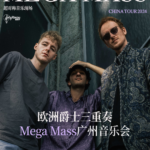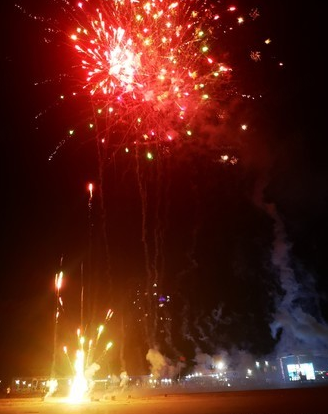International piano artist Wu Muye’s new tour – “Warcraft Domination: Liszt’s 24 Super Concert Études”. International piano artist Wu Muye will play the movement of speed and passion in the latest tour “Warcraft Domination: Liszt’s 24 Super Concert Études”. This time, Wu Muye brings a set of works that can be called “king bomb”. It is a rare opportunity to hear Liszt’s 24 études in full at one time. This rare super concert is very worthy of collection for music fans. Wu Muye feels that although he can also choose to complete the performance of the same repertoire at the age of 20 or 30, at that time, his attitude towards the world and his understanding of life are not yet mature – he has not completed nearly ten years of wonderful reading and more than one million kilometers of self-driving. He has not faced the loss of life and the unexpected encounter of life. In another ten years, he will be more mature, but his physical condition may not reach the state required by Liszt’s repertoire. Wu Muye hopes to bring this super work to the audience in the concert hall at his most appropriate age. He said in his Weibo, “I pay tribute to everyone’s unfulfilled dream with this latest tour repertoire. May you who are speeding on the life track be surpassing!” This passage seems to let us see the tenderness of a “racing driver”, and it is also like the other side of Liszt’s music, the most showy and the most emotional… The tour poster is also unique. A No. 24 racing car drives into the music jungle full of myths, magic and endless adventures on the piano keys, racing all the way to the top of the piano concert world.
The repertoire list of the piano solo world tour of “Warcraft Domination: Liszt’s 24 Super Concert Études”:
Twelve Transcendental Études, S.139
1. Preludio Prelude
2. Molto Vivace Very fast allegro
3. Paysage Landscape
4. Mazeppa
5. Feux Follets Will-o’-the-wisp
6. Vision
7. Eroica Heroic
8. Wilde Jagd Hunting
9. Ricordanza Remembrance
10. Allegro Agitato Molto Agitated allegro
11. Harmonies du soir Harmony of the evening
12. Chasse-neige Chasing snow
Three Concert Études, S.144
1. Il lamento Lament
2. La leggierezza Lightness
3. Un sospiro Sigh
Advanced Étude “Ab irato” (Grande étude de perfectionnement de la Méthode des méthodes pour le piano), S.
Two Concert Studies, S.1451 and Waldesrauschen, the howling of the forest, and Gnomes’ Dance, Pagani’s Grand Etudes, S.141, Prelude, Andante, La Campanella, the bell, La Chasse, the hunt, Allegretto, the brisk movement, and Quasi Presto, the rapid movement. The Twelve Transcendental Etudes, S.139, composed around 1851, are intimidatingly difficult pieces in the history of piano. From a technical perspective, Liszt’s 12 works are excessively challenging, as if they are at the pinnacle of piano performance art. Even in the 20th century, when piano masters abounded, few performers dared to challenge them. In terms of arrangement, these twelve etudes by Liszt are in different keys and are arranged in descending fifths. Liszt’s piano music has always been considered “passionate, beautiful, and spacious,” which may be well reflected in these 12 etudes. Like Hungarian Rhapsodies, the Transcendental Etudes are also his “most enjoyable” music and the most virtuosic piano music. Unlike Chopin’s etudes, Liszt’s etudes are always more intense, as if there is an infinite passion to be expended, of course, without excluding the beauty of the melody. The Three Concert Etudes, S.144, were composed between 1848 and 1850 when Liszt served as the court conductor in Weimar. Although called etudes, Liszt wrote them full of poetic and picturesque imagery, once titled them as “Poetic Caprices.” The Grand Etudes on Paganini’s Caprices, S.141, written in 1838 and published by Breitkopf & Härtel in 1840, were originally named “Transcendental Etudes Based on Paganini’s Caprices.” Paganini was a violinist who developed the skills of the violin to the highest level, and people described him as doing on the violin what only the devil could do. He directly influenced Chopin and Liszt in the development of piano art.
Liszt adapted five of Paganini’s Twenty-Four Caprices and the rondo theme from the Second Violin Concerto into piano etudes. Liszt’s adaptation of Paganini is truly a perfect match. Wu Muye, an international piano artist, has broken the stereotypical impression of Chinese audiences on virtuoso pianists. He also meets the highest expectations of the public for a piano master: superb skills, profound musicality, and outstanding personal charm. Wu Muye presents a set of tour repertoires every year, along with album releases. It not only shows his rare performing strength and breathing capacity but also protects and inherits the peak works of classical music. From Schubert’s Complete Impromptus, Chopin’s Complete Waltzes to Soliloquy of the Strong 1 · Selection of Beethoven’s Peak Works, Soliloquy of the Strong 2 · Selection of Liszt’s Peak Works, and then to this Warcraft Domination: Liszt’s 24 Super Concert Etudes. Going to the concert hall to enjoy Wu Muye’s solo concert every year has become an essential check-in habit for classical music fans. Wu Muye’s grasp of the profundity of music far exceeds his age. He seems to be a film master in the concert hall interpreting the life of a musician. For Wu Muye, the balance between skills and emotions is the balance between restraint and freedom, reason and emotion, insight and romance. This is precisely the greatest poetry that classical music gives him. When an artist perfectly balances the opposites between conflicts, it is the elegant and charming moment when art bursts forth. His piano perfectly achieves this genius balance between restraint and release.
Open time: Friday, April 18. The performance is postponed.
Guangzhou · Warcraft Domination: Liszt’s 24 Super Concert Études by Wu Muye Piano Solo World Tour
International piano artist Wu Muye’s new tour – “Warcraft Domination: Liszt’[...]









